

CarExpert.com.au
The CarExpert team's favourite cars of 2025
6 Hours Ago
Two new, high-riding urban crossovers go head to head, one from Australia's biggest car brand and the other from a niche European challenger.

Senior Contributor
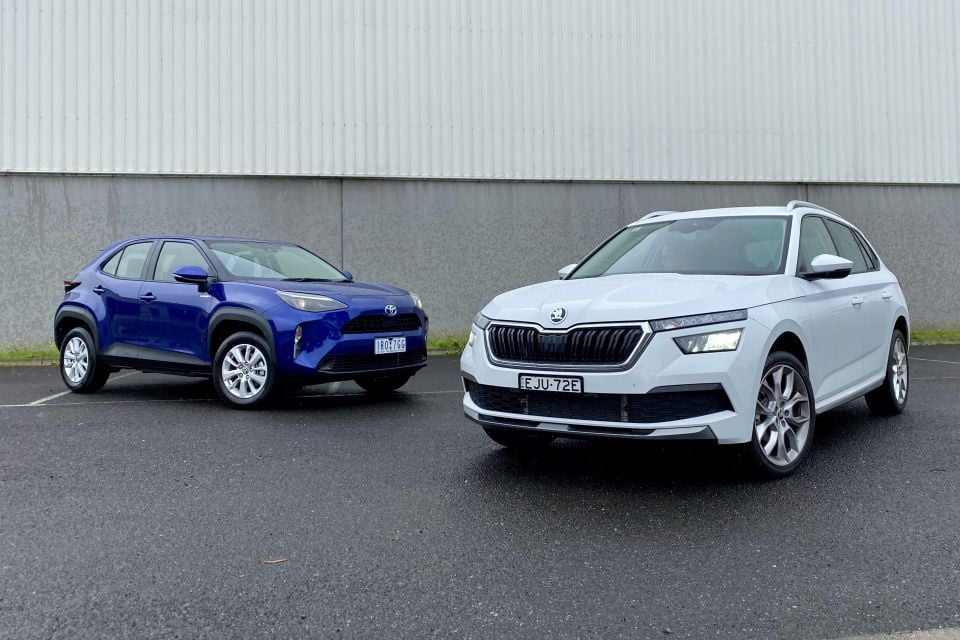

Senior Contributor
Both the Toyota Yaris Cross and Skoda Kamiq launched into the Australian market during 2020. Each seeks to tempt the growing number of people looking at switching into a small SUV for their next urban runabout.
With their elevated driving positions, extra ground clearance, and pumped-up designs, the Czech Skoda and Japanese Toyota are very much in vogue. And because they’re both new to market, should be among the best choices in their class.
Competitor vehicles include the Mazda CX-3, Hyundai’s Venue and Kona, Volkswagen’s T-Cross, Ford’s Puma, Nissan’s Juke – just a few from among a lengthy list of contenders.
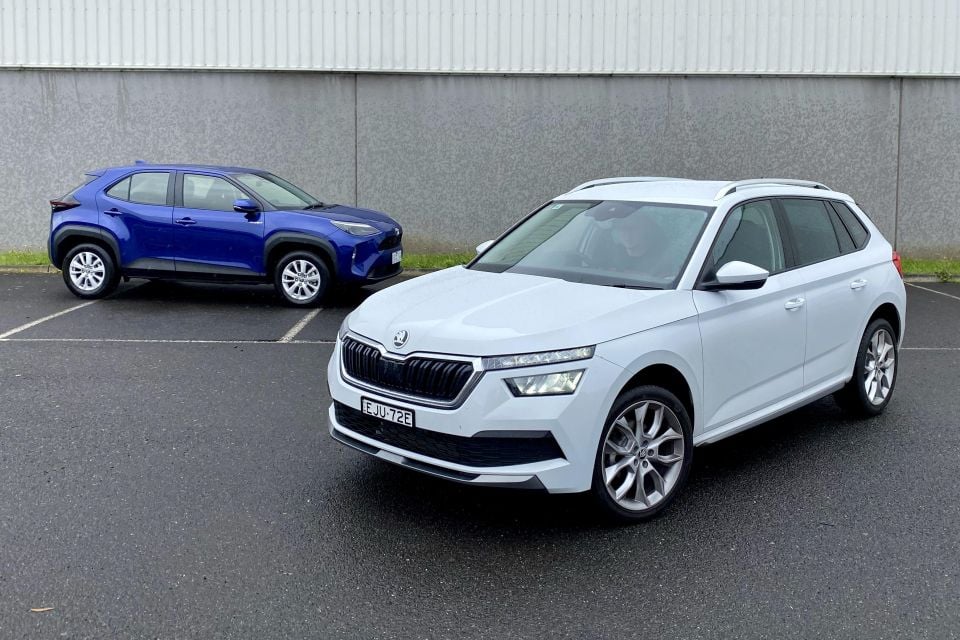
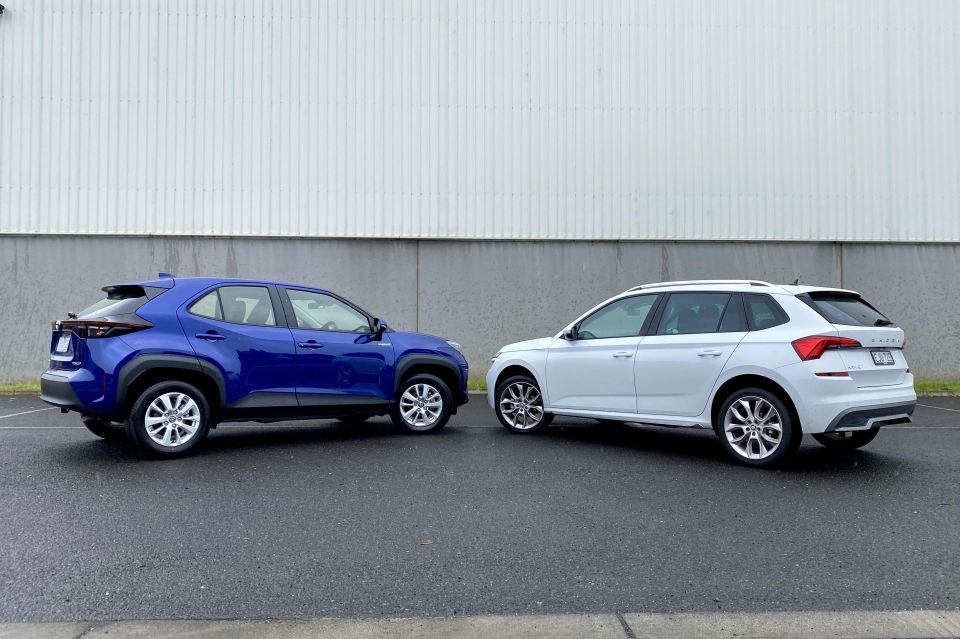
There’s just the one Skoda Kamiq variant to choose from right now, called the 85TSI, priced at $26,990 plus on-road costs with a manual gearbox, or $27,990 plus on-roads for the automatic version on test here. A luxury 110TSI Monte Carlo model will come soon.
There are three Toyota Yaris Cross spec grades to choose from. Here we have the base GX which costs $26,990 plus on-roads for the petrol auto, or $28,990 plus on-roads for the petrol-electric hybrid tested here. There are more luxurious GXL and Urban grades available.
We have the Skoda Kamiq 85TSI DSG here, versus the Toyota Yaris Cross GX Hybrid.
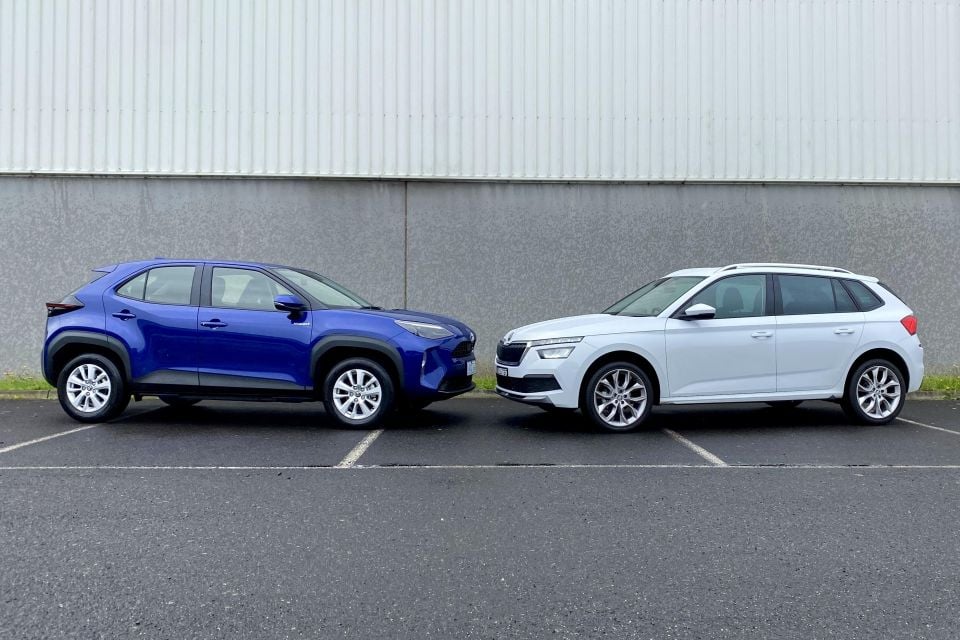
We mentioned the list prices earlier. But what will you actually pay? At the time of writing Skoda was offering the Kamiq DSG for $29,990 drive-away, whereas the Toyota Yaris Cross GX hybrid was quoted at $32,960 on the road (in Melbourne, it varies by State).
Both brands require you to pay extra for metallic or pearlescent paint: $550 for the Skoda (except for the super-swish Velvet Red at $1100), and $500 for the Toyota.
Drive-away prices:
MORE: Skoda Kamiq pricing and specs MORE: Toyota Yaris Cross pricing and specs
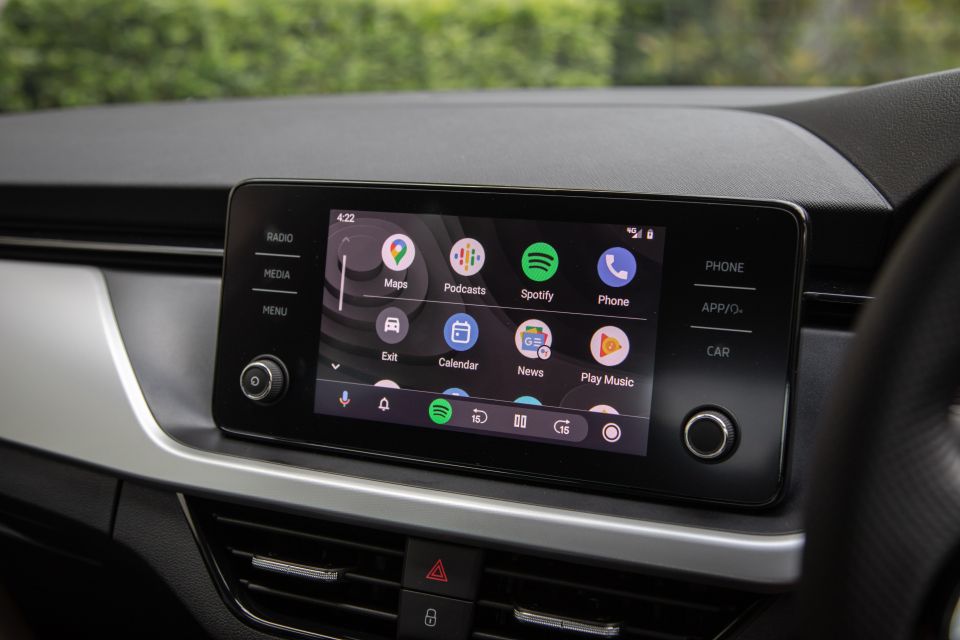
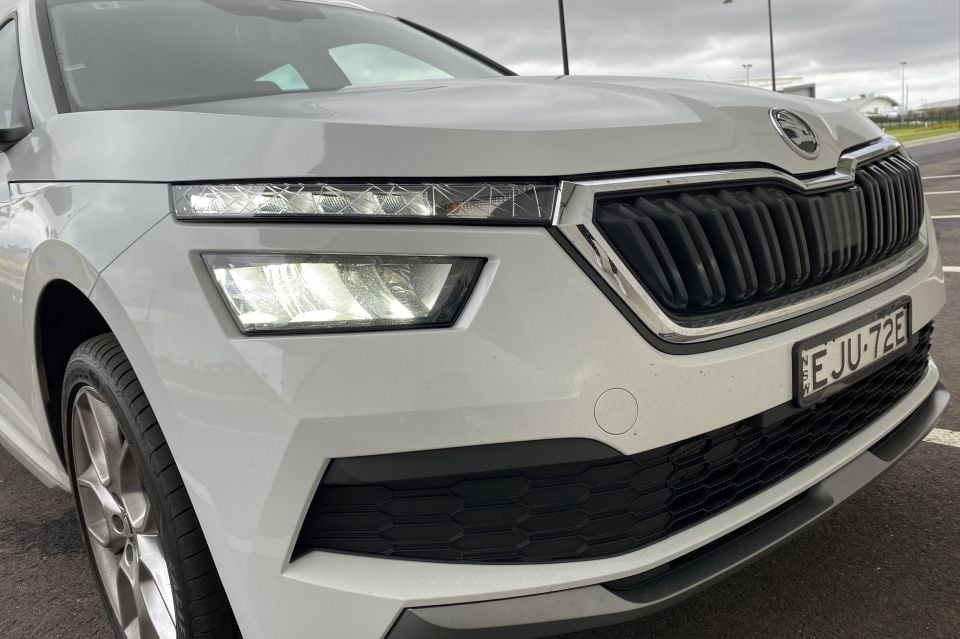

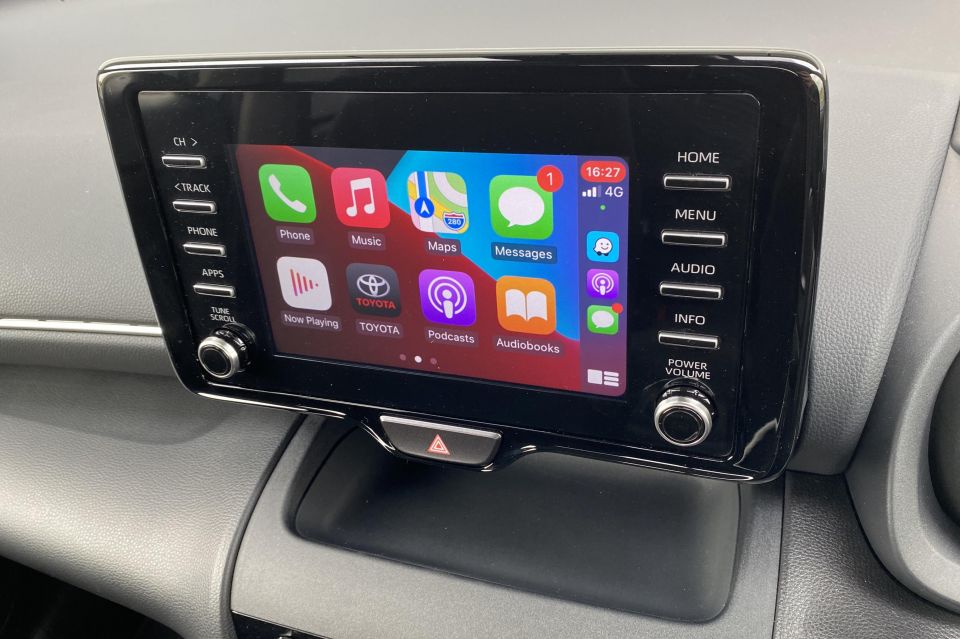
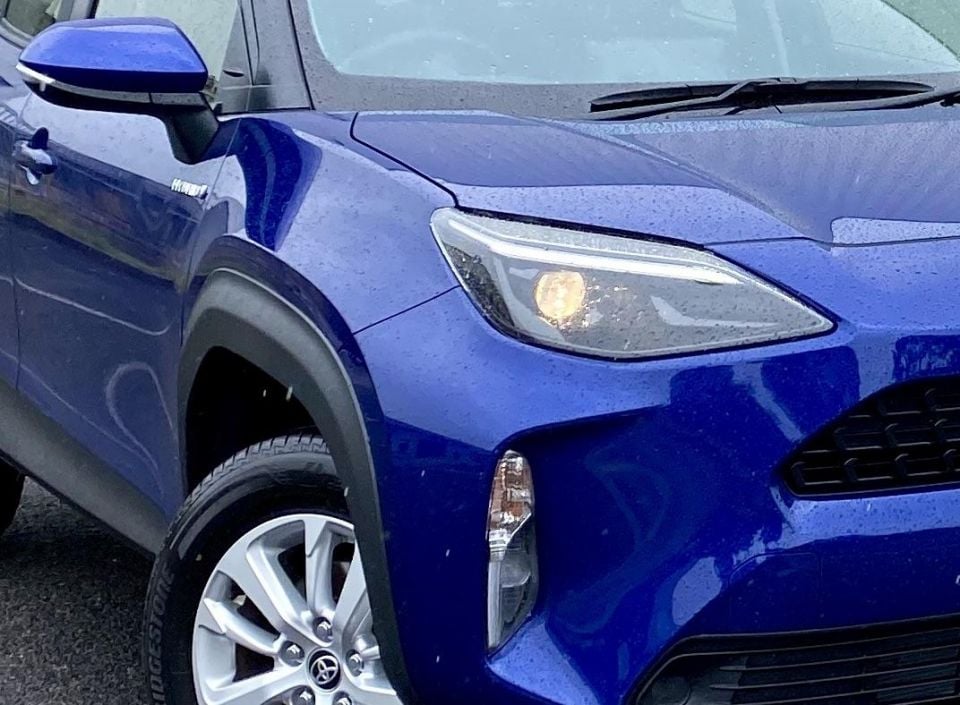

Both come with alloy wheels, LED daytime running lights and tail lights, proximity key access, auto-folding side mirrors, fabric seats, climate control, Apple CarPlay, Android Auto, a reversing camera, and adaptive cruise control.
Despite being cheaper, the Skoda offers a longer list of features than the equivalent Yaris Cross.
Extras in the Kamiq include LED headlights instead of halogen, rear parking sensors, roof rails, rain-sensing wipers, an electric tailgate, rear tinted privacy glass, fully digital instrument cluster (called Virtual Cockpit), two-zone climate control, an auto-dimming rear-view mirror, and a wireless phone charger.
The Toyota alone has digital radio and an electric park brake with Auto Hold function.
Want more luxury features? There are options.
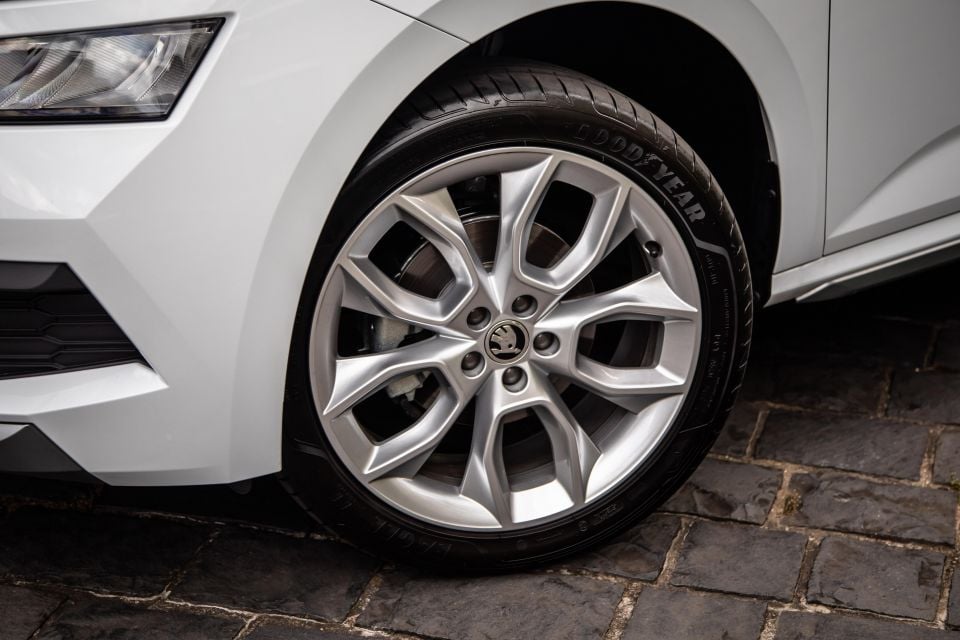

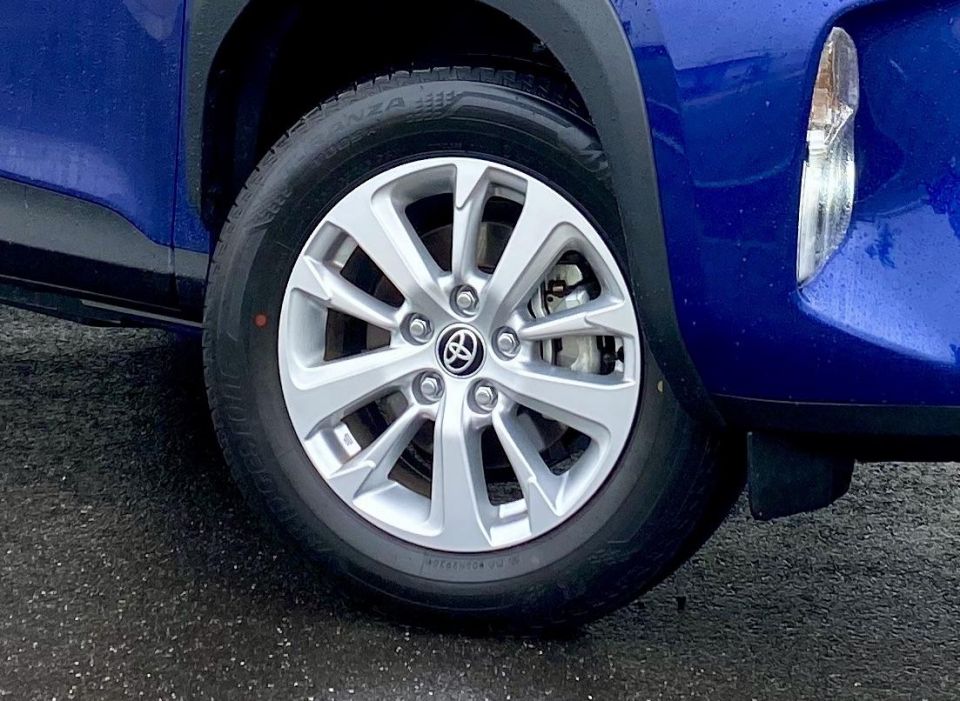
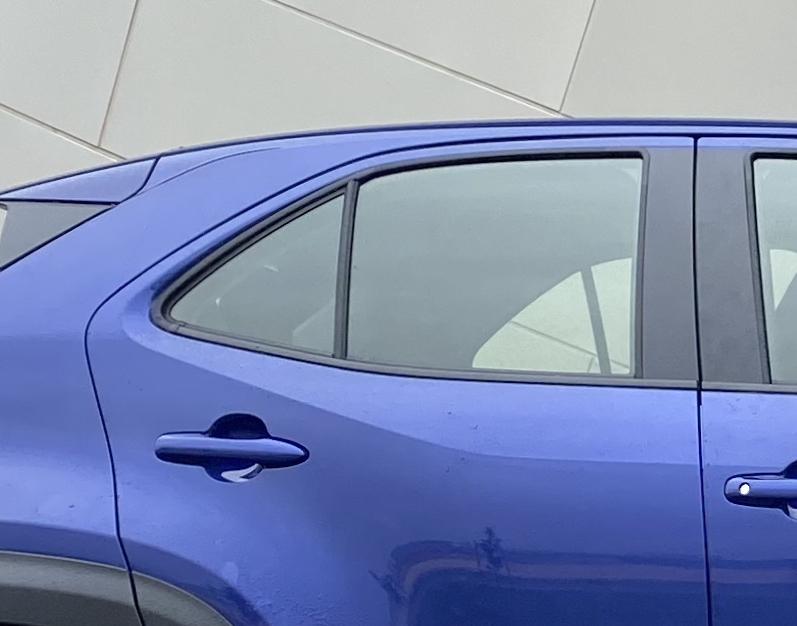
The Skoda can befitted with two packages: There’s a $4100 Driver Support Pack (leather/suede seats, heated front and rear seats, an electric driver’s seat, auto parking assist, blind-spot monitoring, and rear cross-traffic alert) and a $3800 Tech Pack (9.2-inch touchscreen upgrade, sat-nav, animated indicators, pumped-up sound system, wireless Apple CarPlay, and voice control).
Therefore a fully loaded Kamiq 85TSI with all options costs $37,890 drive-away.
Meanwhile, you can step up into a Yaris Cross GXL ($34,100 for the petrol and $36,086 for the hybrid, both drive-away) and get extras over the GX such as LED headlights, privacy glass, front and rear parking sensors, sat-nav, blind-spot monitoring, rear-cross traffic alert, and a 360-degree camera.
Or you can go for the Yaris Cross Urban ($37,228 for the petrol and $39,212 for the hybrid, both drive-away) and get further features such as 18-inch alloy wheels instead of 16s, part-synthetic leather seats, a powered driver seat, heated front seats, a head-up display, a powered tailgate, and an extra cabin USB point.
Still, as tested, there’s no doubt that the sub-$30,000 Skoda Kamiq is much better equipped than the Toyota Yaris Cross GX which is priced closest to it.
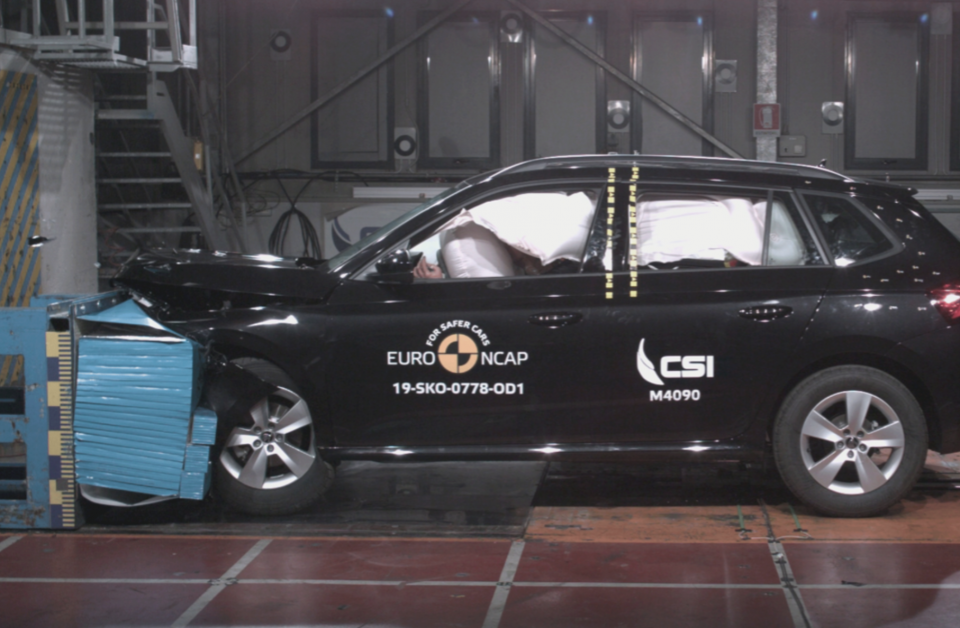
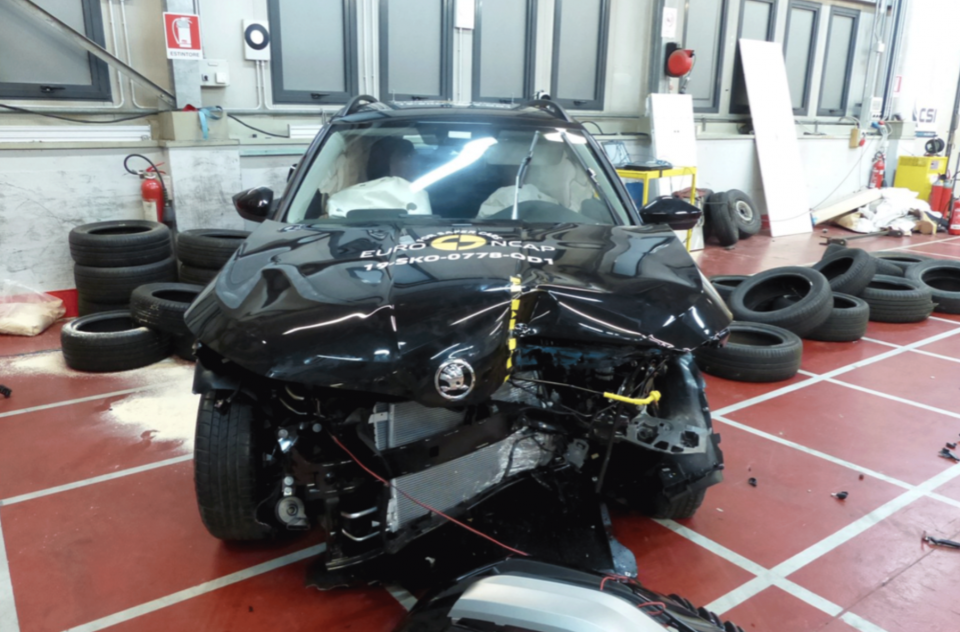
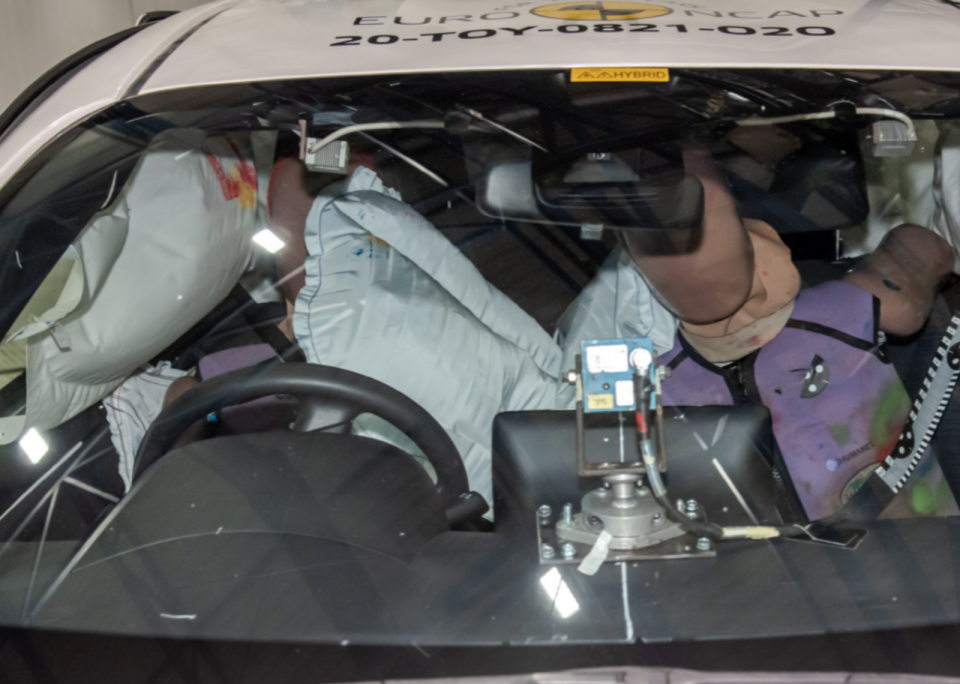
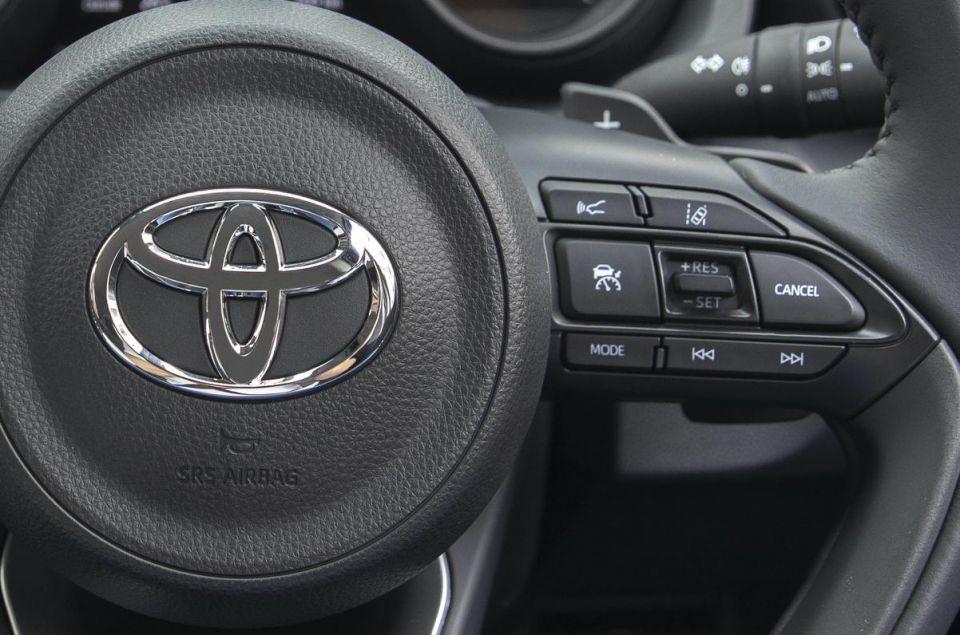
The Skoda has a five-star ANCAP crash rating with a 2019 date stamp. It scored 96 per cent for adult occupant protection, 87 per cent for child occupant protection, 80 per cent for vulnerable road-user protection, and 76 per cent for safety assist.
The Toyota Yaris Cross has not ben tested by ANCAP, yet. However, the regular Yaris (which shares much of the same components and is smaller), has a five-star ANCAP rating against even tougher 2020 testing criteria. There is no guarantee that the Yaris Cross will do as well, but it’s a likely scenario.
Both come with dual front, front-side, and full-length curtain airbags. The Skoda has a driver’s knee airbags, while the Toyota has airbag protection between the front two occupants to mitigate head clashes. Each also has rear ISOFIX and top-tether child-seat points.
Each car also has active lane-keeping assist that’ll ‘steer’ the car between road lines on highways and beep at you to pay more attention, plus forward autonomous emergency braking.
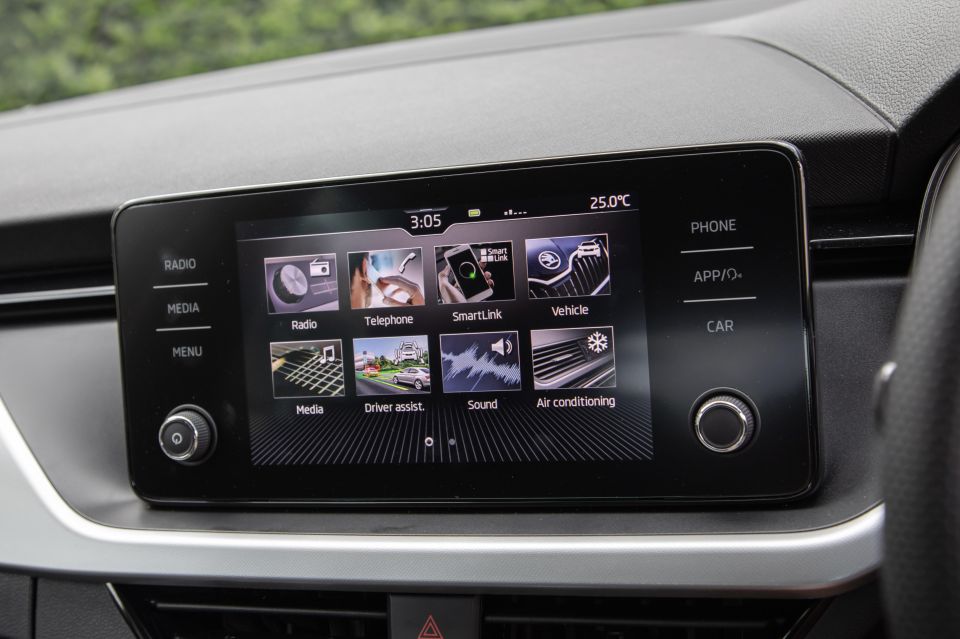

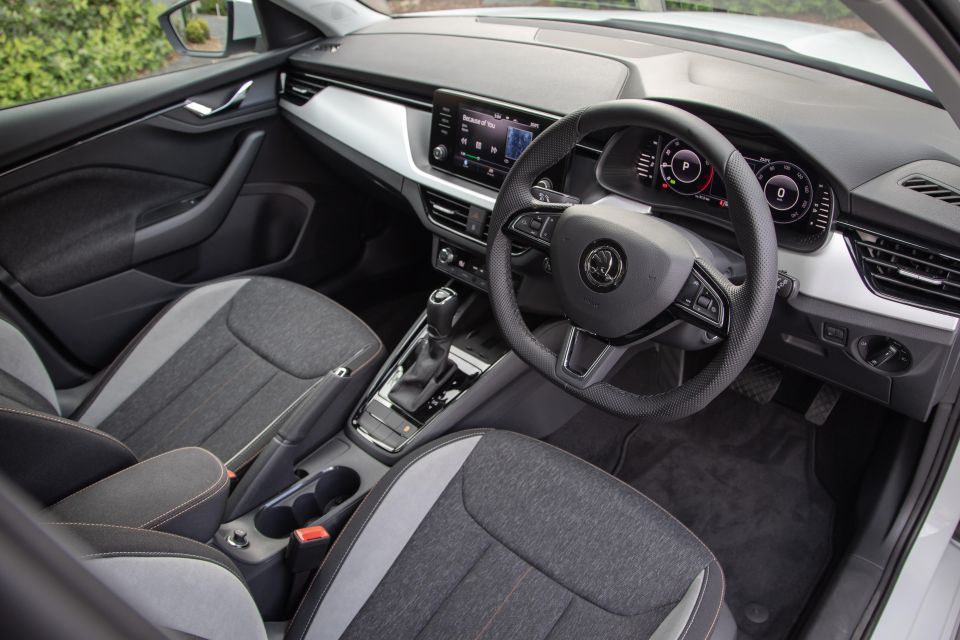
Skoda:
The Skoda’s driver seat is 6cm longer in the base than the Toyota’s, and also more supportive and trimmed in rather fetching charcoal fabric with orange stitching and grey bolsters.
Those same cool trims carry over to the door inlays and centre console cover as well, and they combine with the dimpled leather wheel, dotted plastic door trims, metallic handles, and silver dash piece to really add some design nous.
There are more soft-touch and padded surfaces than in the Toyota, and small touches like the felt-lined storage cubby next to the starter button, and glovebox, add a hint of premium feel. Though the build quality in each of these cars is about par.
Skoda has done a great job making a fully digital instrument cluster standard, and the fact it can display various looks ensures you won’t get bored. It’s also quick to load and of high resolution so it shouldn’t date quickly.
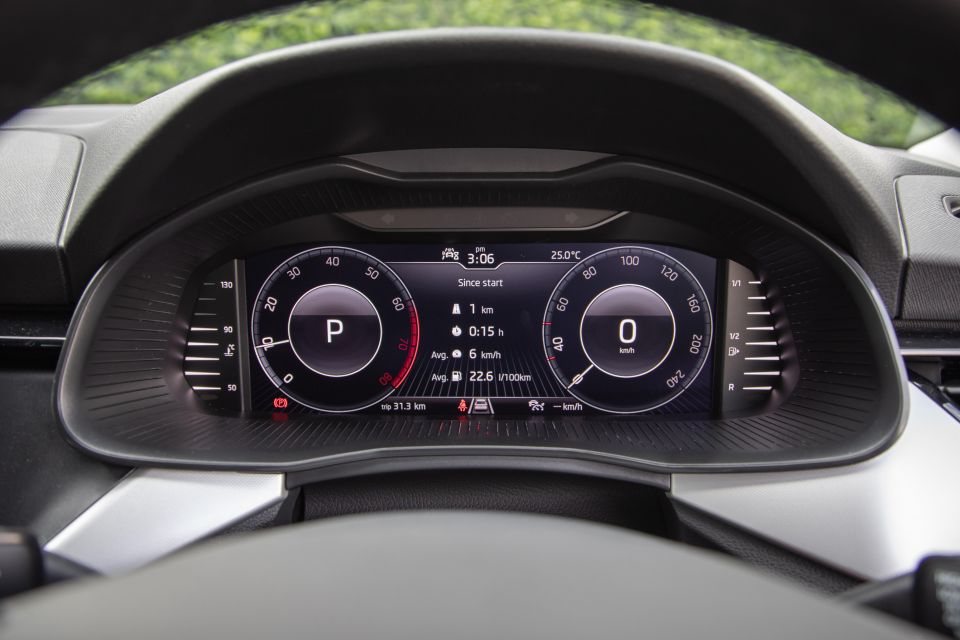
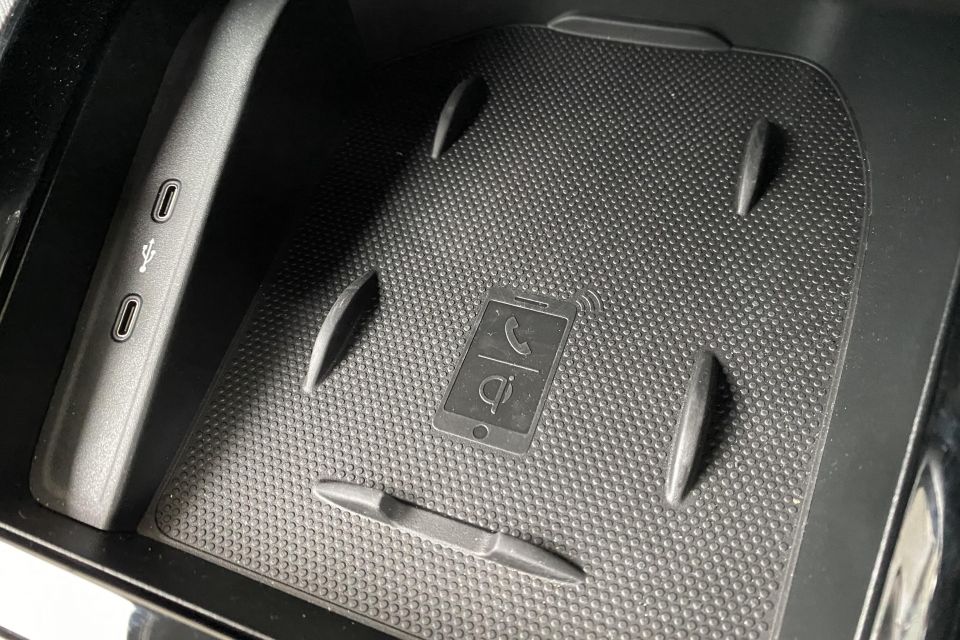
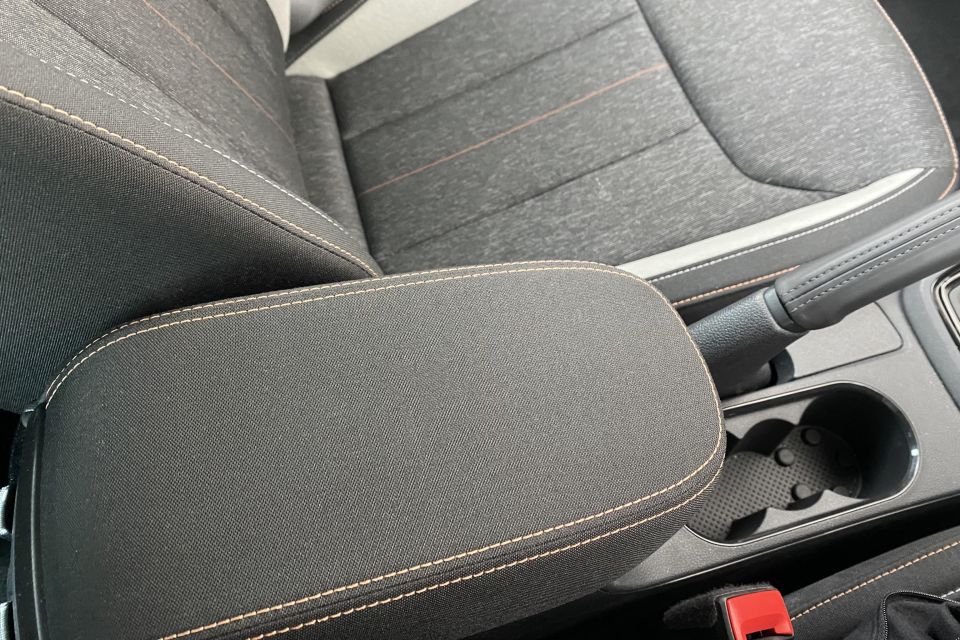
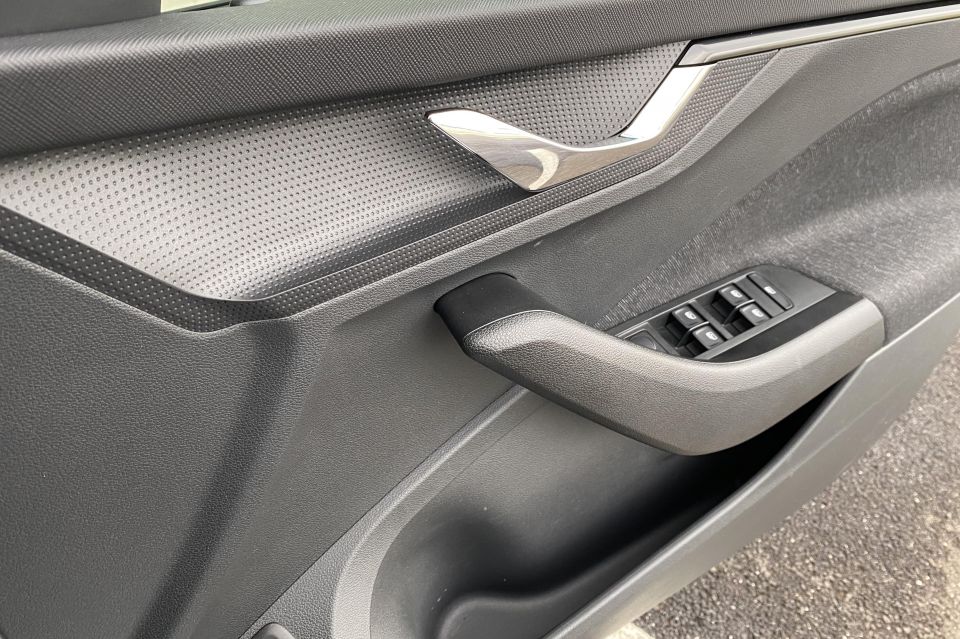
The centre screen is an inch larger than the Toyota’s, and swipes more like a smartphone. As with the Yaris, it relies on phone mirroring in lieu of sat-nav, but overall feels a little slicker and more contemporary. The lack of DAB+ radio is odd, though.
The digital climate control has a menu button that brings up an AC control page on the touchscreen, necessitating multiple processes to change the fan speeds. A small but occasionally annoying thing.
Below this sits a wireless charging pad with a neat little ‘frame’ to hold your phone snug. There are also two USB-C points up front, instead of ‘normal’ USBs.
The door bins, console and glovebox are larger than the Toyota’s, and there’s also a sunglasses holder in the roof. It’s also the only car here with passenger-seat height adjustment and adjustable seatbelt buckles in the pillars.
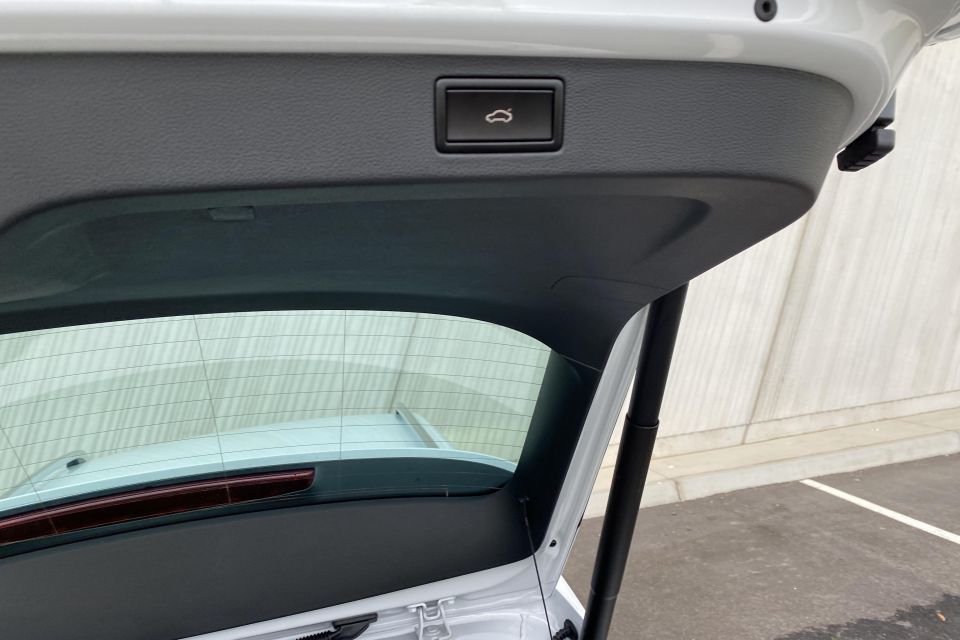
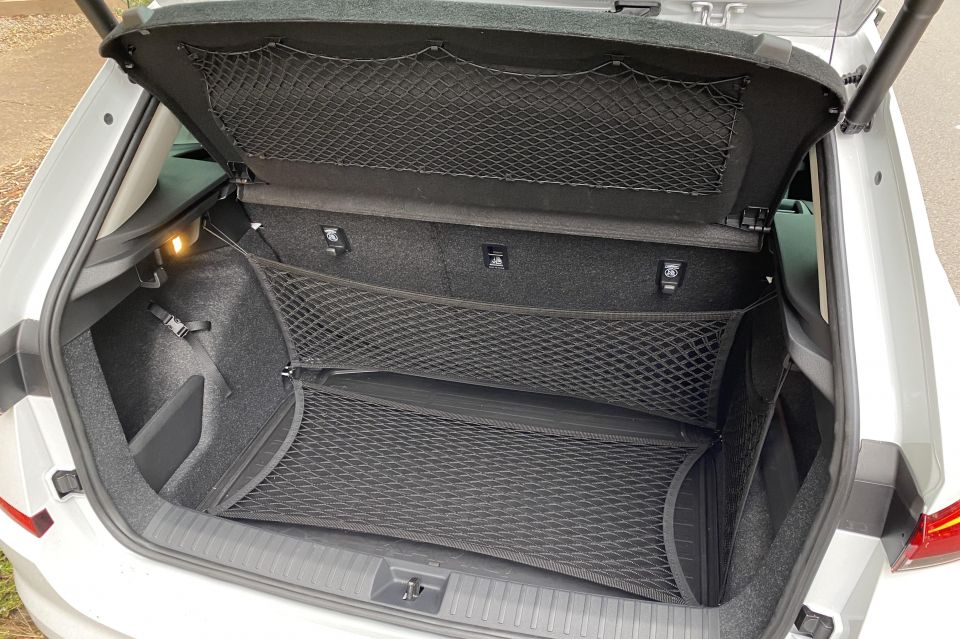
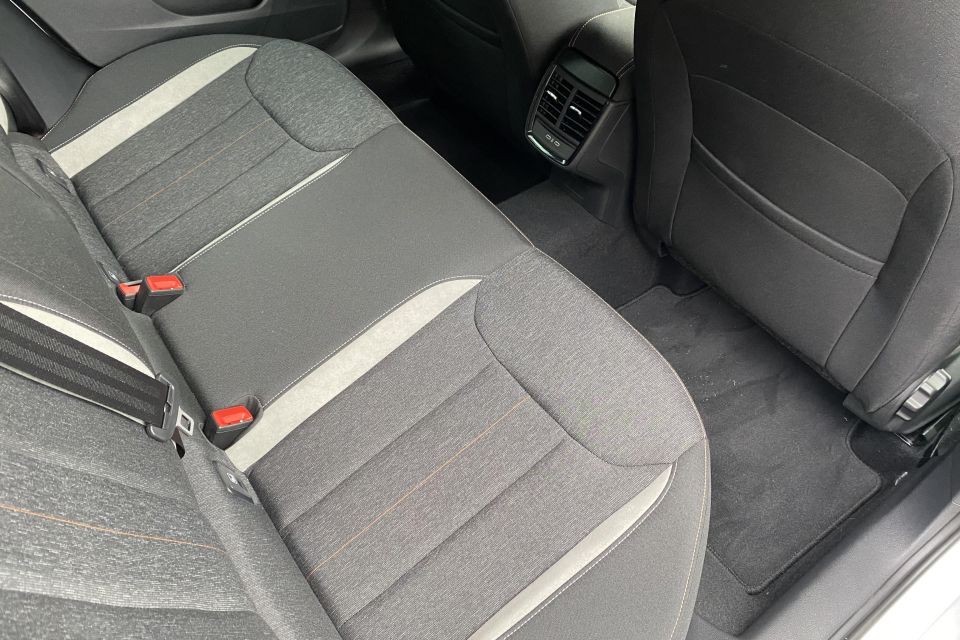
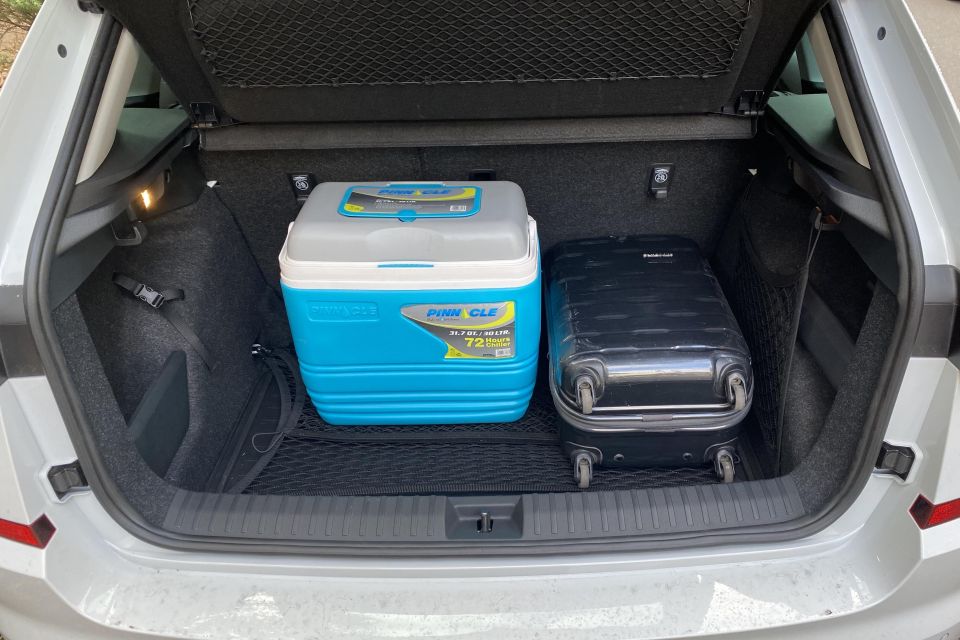
While the Yaris Cross has quite well-packaged back seats, the Kamiq’s are even roomier. I’m 194cm and had plenty of legroom and headroom even behind my own driving position. Remarkable, that.
You also have rear vents, two additional USB-C points, coat hooks, LED lights, and overhead handles. It could double as a family car if you have smaller kids.
The boot has a button to open and shut electrically, which is very unusual on a $30,000 car. The boot capacity is 400 litres, 10L greater than the Yaris Cross’s. Both are therefore pretty capacious for such tiny cars. The loading area measures 101cm between the arches and 73cm from loading lip to seat back.
Keeping pace with Skoda’s ‘Simply Clever’ tagline, the cargo area came loaded with no fewer than four luggage nets, a rubber floor protector, four bag hooks, a removable torch, and a rigid removable parcel shelf. A space-saver spare lives under the loading floor.
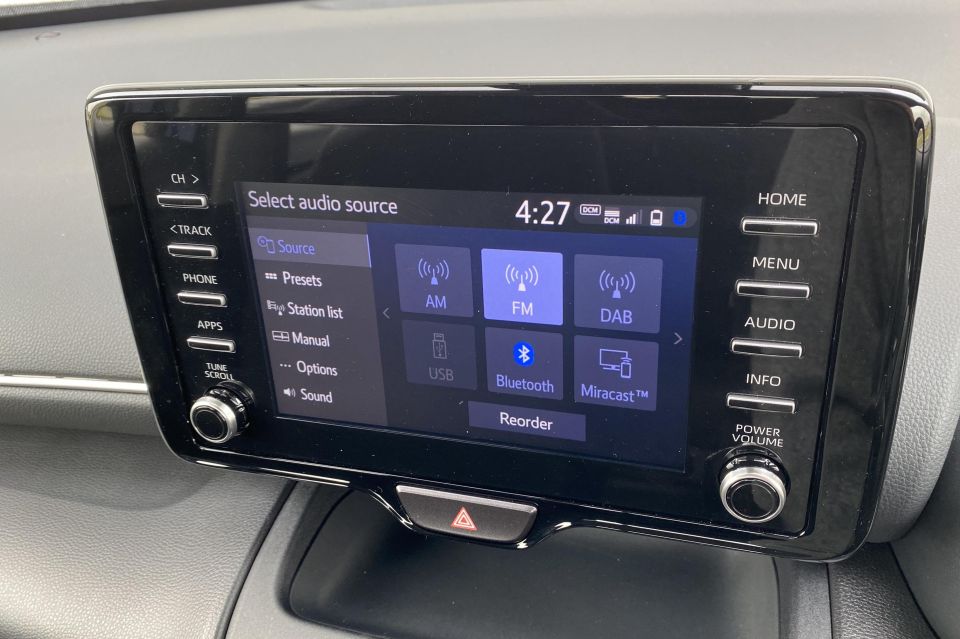
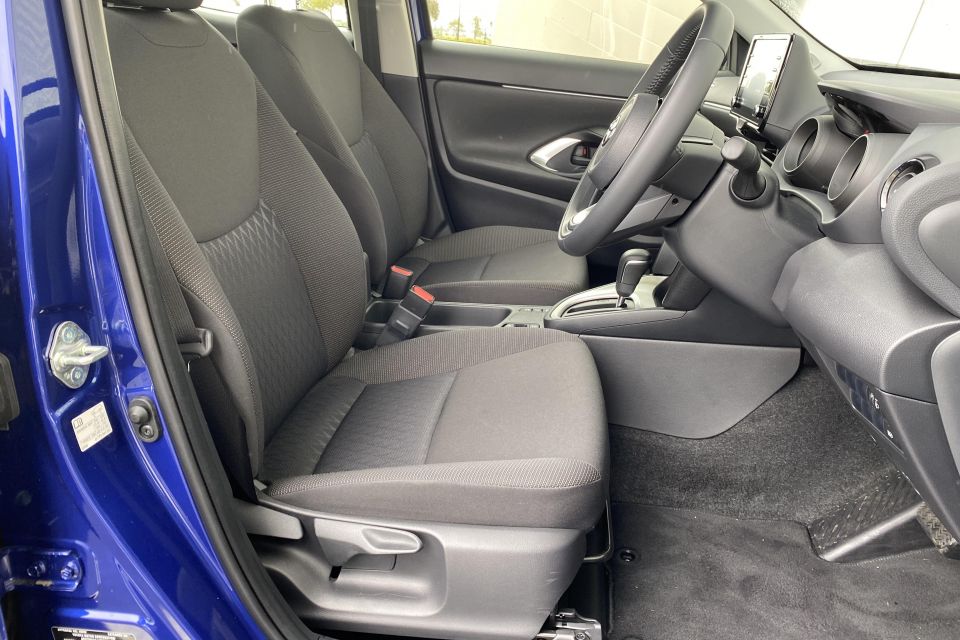
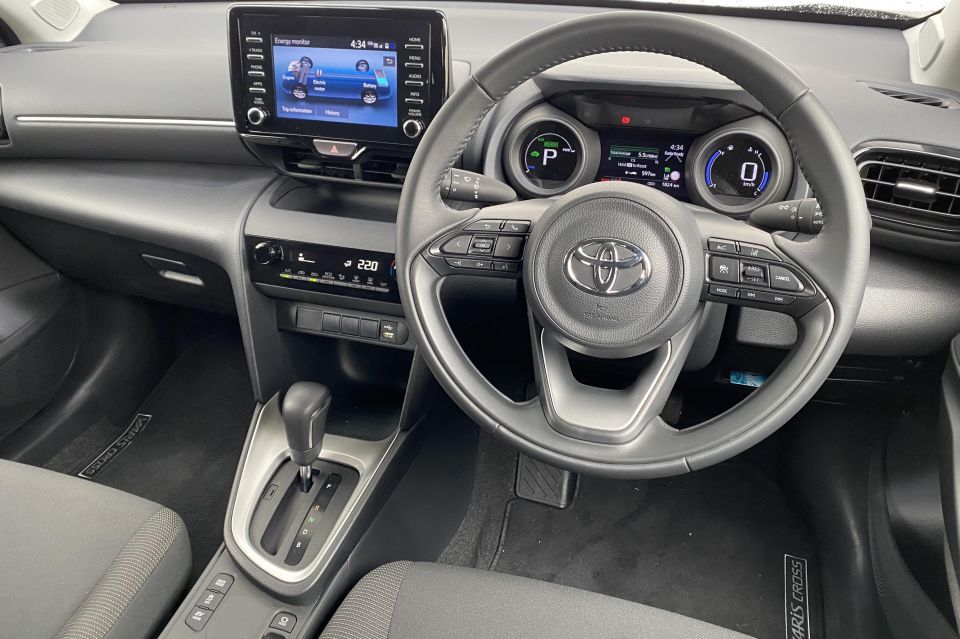
Toyota:
The Yaris Cross unsurprisingly looks and feels much like the ‘regular’ Yaris’s does, but you’re positioned up higher than you’d expect, giving you a fantastic road view.
The steering wheel is nicely trimmed and has buttons to control audio functions and cruise control, and behind it sits an instrument display with two digital round dials flanking a small digital trip computer that also displays your active safety systems and the hybrid engine’s activity.
The centre screen offers a crisp enough rear-view camera, and while there’s no native navigation you can mirror your smartphone through Apple CarPlay or Android Auto. You can also customise the home screen with three tiles of your choice.
The fact you only get one USB point seems a little dated, however.
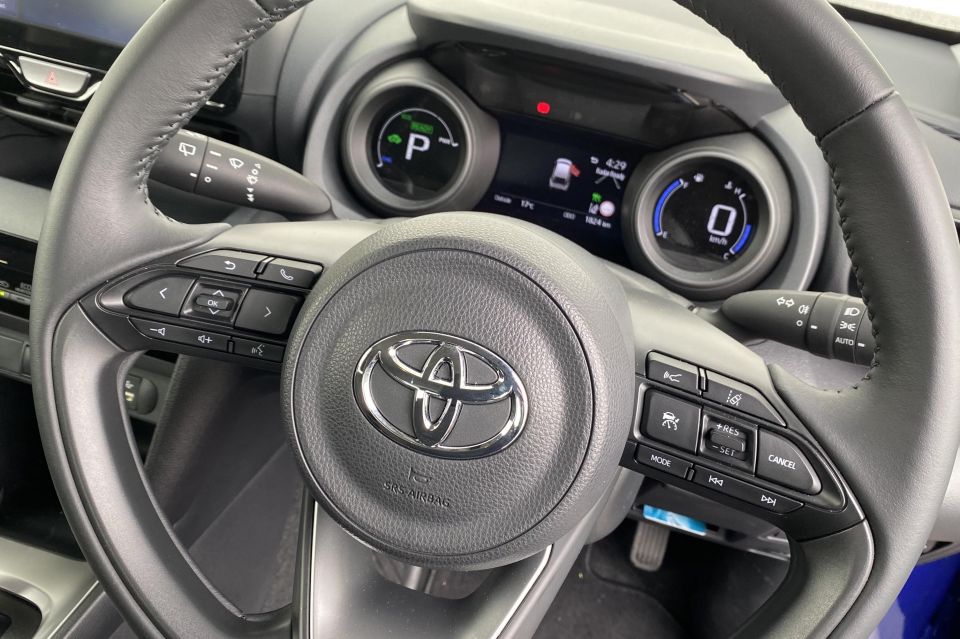
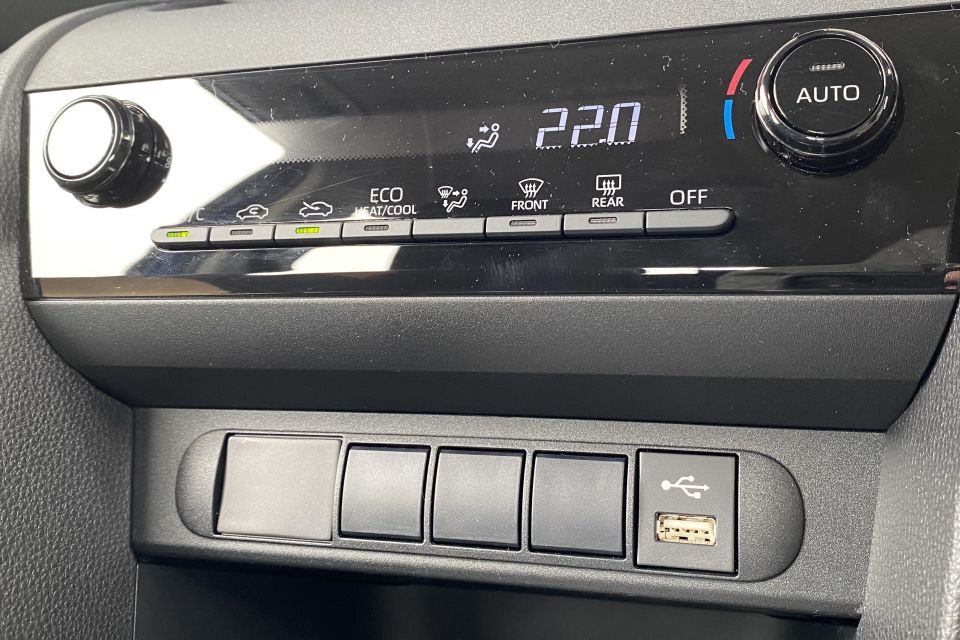
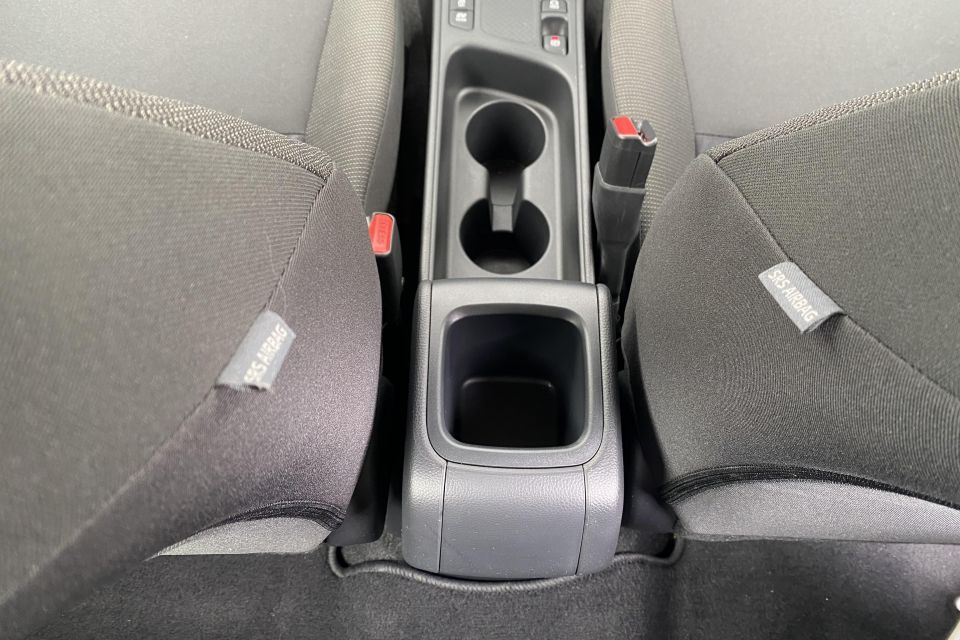
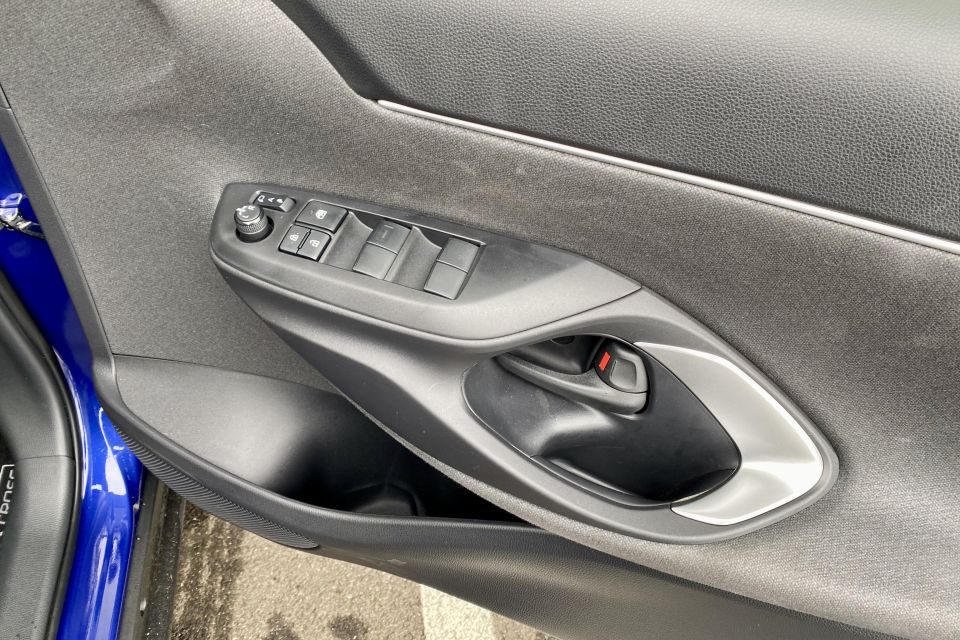
There are some interesting trims, such as the hardy fabric door inlays, blue starter button, silver plastic highlights, and interesting seat pattern. Most of the touch points are hard to the touch, especially the piece on which your left knee rests.
While there’s no centre console-cum-armrest, there are three large open cubbies along the transmission tunnel and dash, and decent glovebox and door bins storage. It’s more clutter-friendly than most small cars.
Other gripes? The presence of no fewer than 10 button blanks on the dash and by your right knee is a permanent reminder that you bought the base model. And there’s a lot of dust-prone shiny black trim on the ventilation controls and around the centre screen.

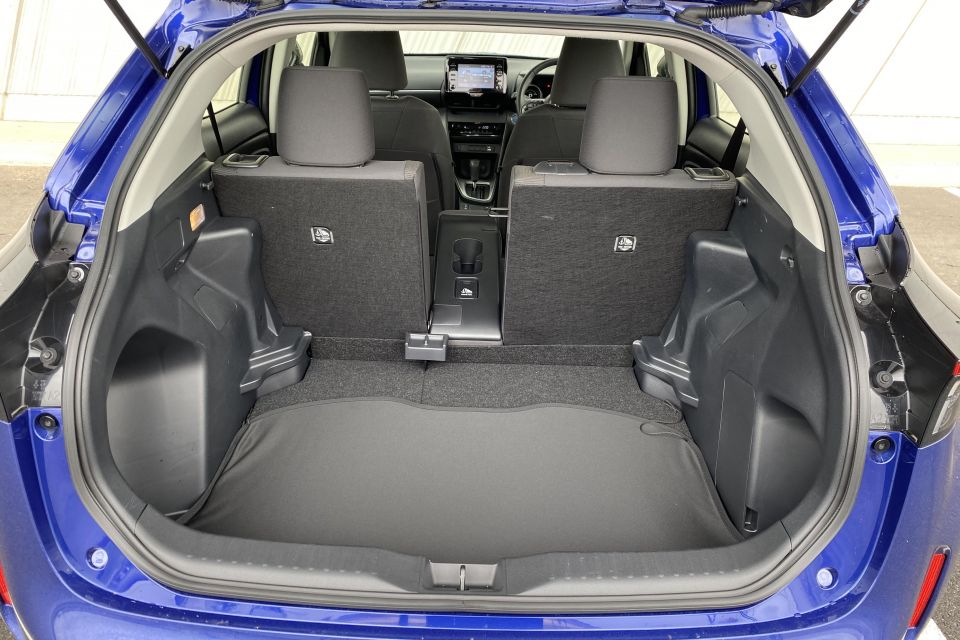
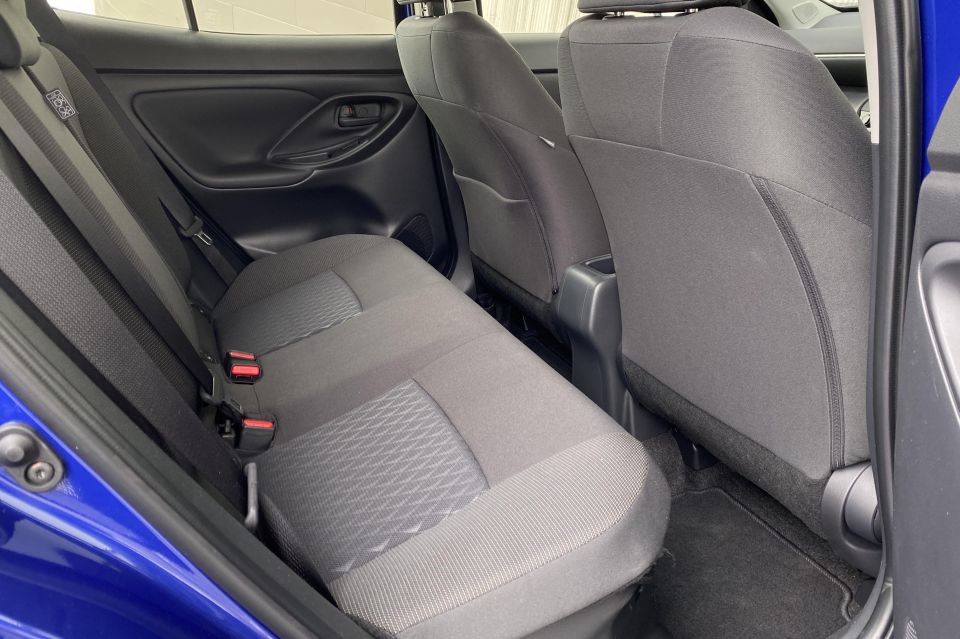

Entry to the back seats is via a rather pokey aperture, and the rear bench is flat and unsupportive in the base. But there’s actually enough legroom and headroom for anyone up to 190cm, bigger side windows than a C-HR, lots of foot space, and a nifty ski sport with built in cup holders.
But there are no rear vents, USBs, or even grab handles.
The boot measures exactly a metre wide between the arches, and 80cm from lip to seat back. The boot floor has two depth settings, under which sits a space saver spare wheel. There are two bag hooks and a light, and a flimsy cargo cover with fabric loops to attach it.
| Skoda Kamiq | Toyota Yaris Cross | |
|---|---|---|
| Length | 4241mm | 4180mm |
| Width | 1793mm | 1765mm |
| Height | 1531mm | 1590mm |
| Wheelbase | 2651mm | 2560mm |
| Boot capacity | 400L | 390L |
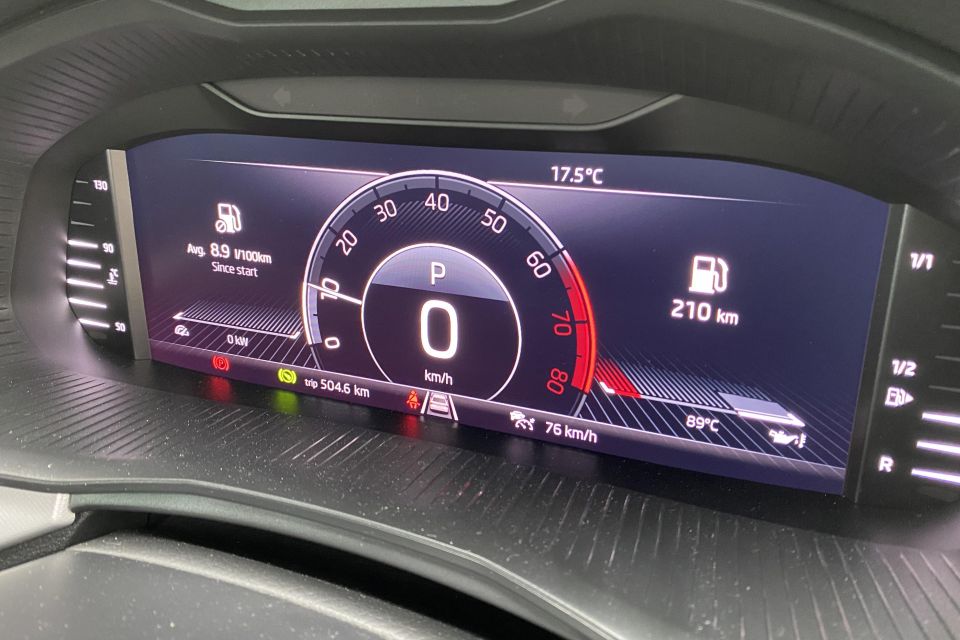
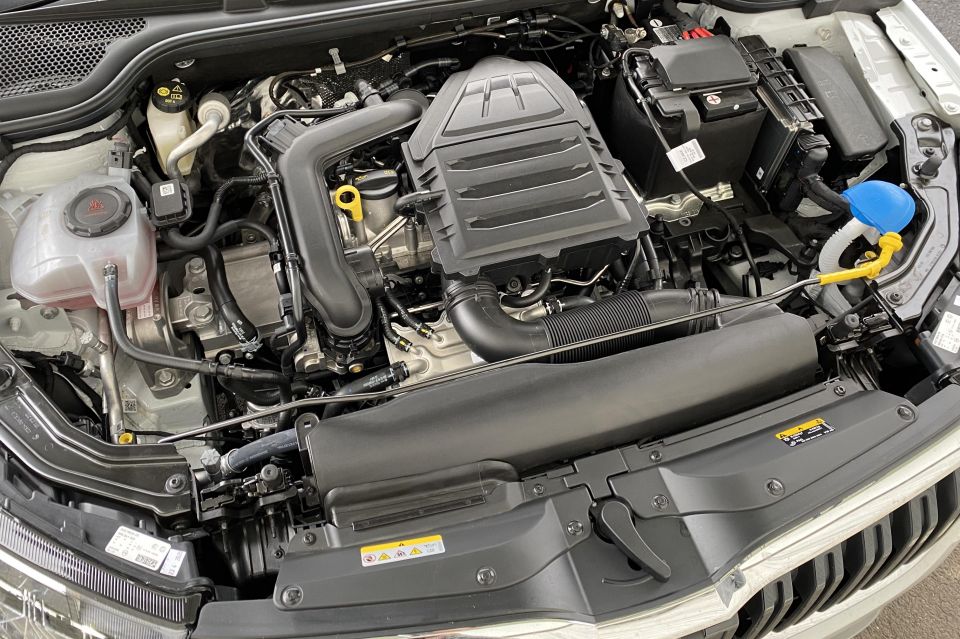
The base Skoda Kamiq uses a 1.0-litre turbocharged three-cylinder engine making 85kW of peak power and 200Nm of peak torque – you have the latter on tap between 2000 and 3500rpm.
It’s mated to a six-speed manual or seven-speed DSG (dual-clutch automatic), and is front-wheel drive (FWD). Combined-cycle fuel economy is 5.0 litres per 100km, but it requires premium unleaded.
If you want more grunt, the Kamiq Monte Carlo has a 110kW and 250Nm four-cylinder engine.
The Yaris Cross has two engine options: a 1.5-litre three-cylinder petrol making 85kW and 145Nm (from 4800rpm), or the petrol-electric hybrid tested here.
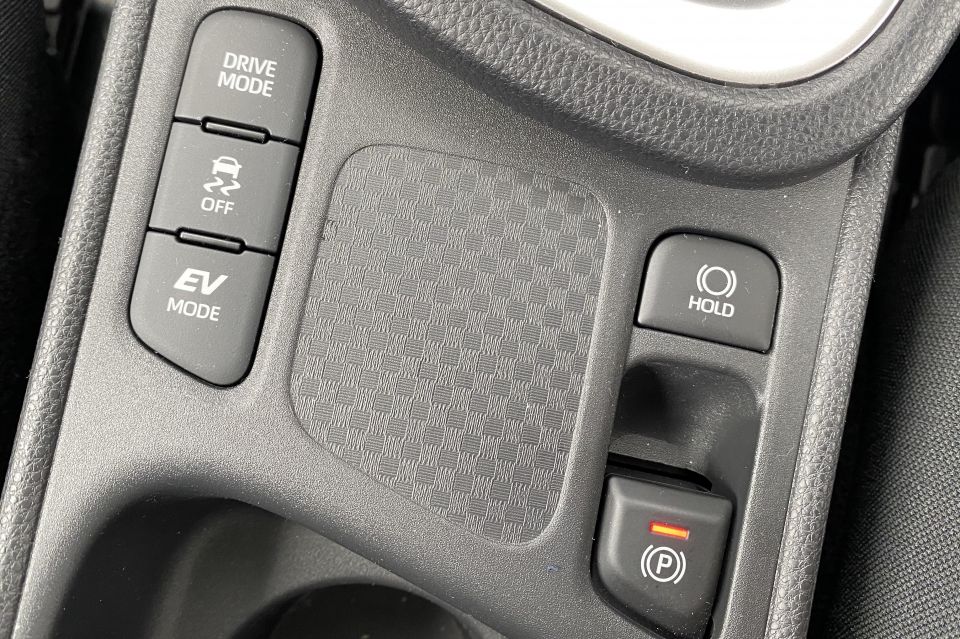
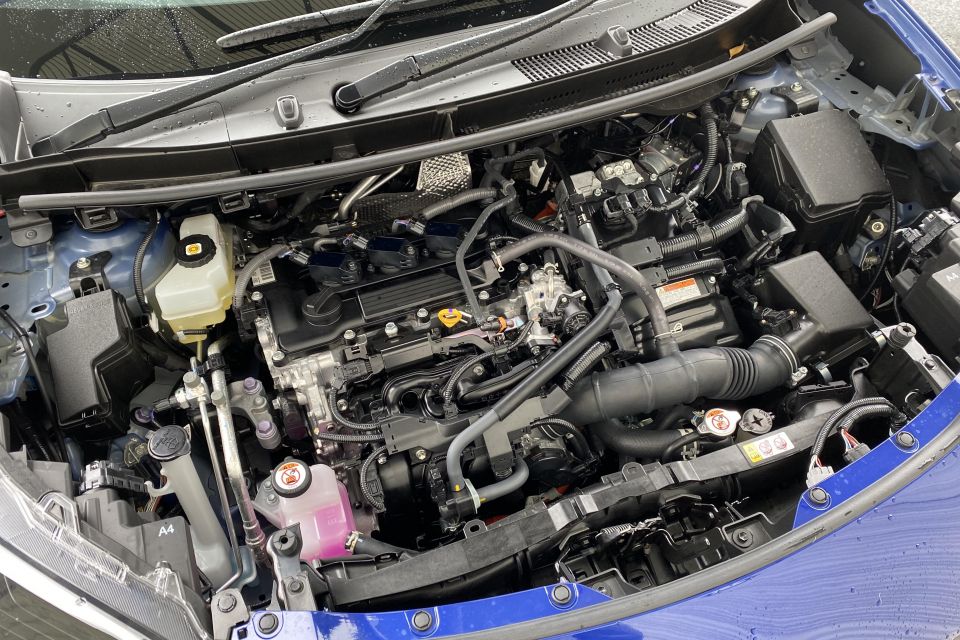
Where expert car reviews meet expert car buying – CarExpert gives you trusted advice, personalised service and real savings on your next new car.
This latter choice pairs a detuned 1.5-litre petrol engine running the more efficient Atkinson cycle with an electric motor and small lithium-ion battery pack, channelling power through an e-CVT automatic.
Combined power output is quoted as 85kW, though Toyota doesn’t quote a system torque figure – there’s 120Nm from the petrol engine and 141Nm from the e-motor, though they come on tap at different times.
Hybrid versions are FWD as standard, but all of the GX, GXL and Urban are available with a space-efficient all-wheel drive (AWD) system powered by a second drive motor responsible for moving the back wheels.
Should you buy the normal petrol or the hybrid? Easy. The hybrid is much punchier off the mark due to its electric motor, which is most active at low speeds off the mark. But it also stacks up financially.
It costs $2000 more than the non-hybrid, but cuts the fuel consumption from 5.4L/100km to 3.8L/100km (under bench testing). That’s 1.6 litres of fuel every 100km saved, and 1600L every 100,000km. By that point (at fuel prices of $1.30), you’ll pay back the difference within this period.
| Skoda Kamiq | Toyota Yaris Cross | |
|---|---|---|
| Drivetrain | Turbo-petrol | Hybrid |
| Displacement | 1.0-litre | 1.5-litre |
| Cylinders | Three | Three |
| Power | 85kW | 85kW |
| Torque | 200Nm | 120Nm from engine 141Nm from motor Variable maximum |
| Transmission | Seven-speed DSG | e-CVT |
| Hybrid battery | N/A | 4.3Ah lithium-ion |
| Drive | FWD | FWD or AWD |
| Fuel economy | 5.0L/100km | 3.8L/100km |
| Fuel type | 95 RON | 91 RON |
| 0-100km/h | 10.2 seconds | 11.1 seconds |
| Power to weight ratio | 70.2kW/tonne | 70kW/tonne |
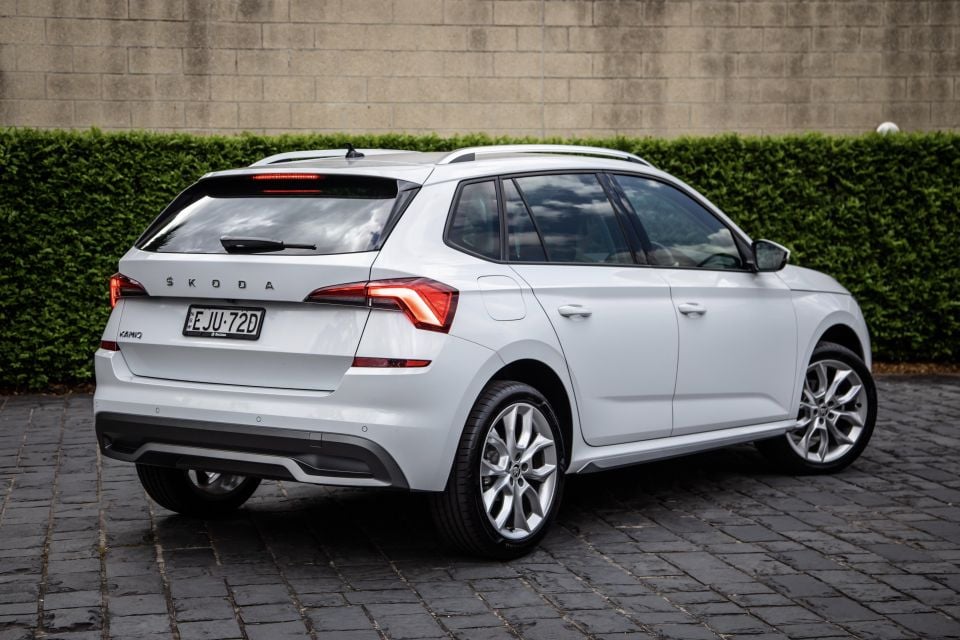

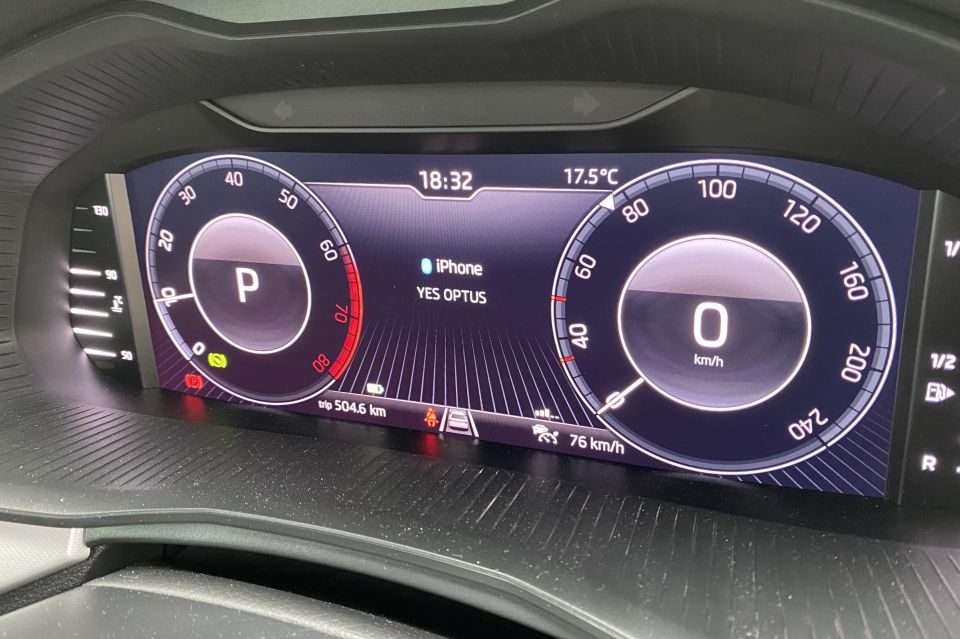
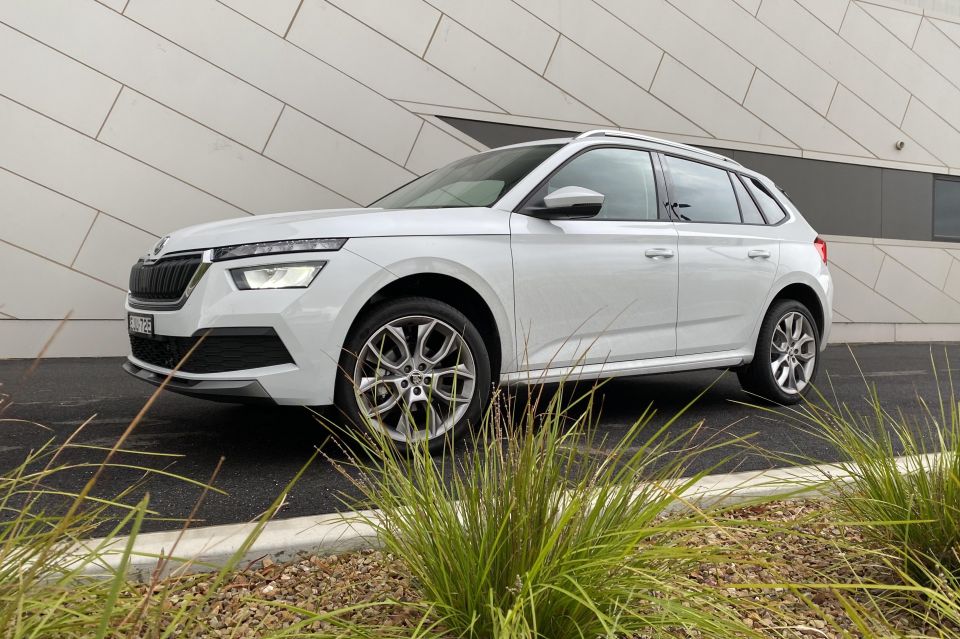
They have some clear differences in the way they drive.
Skoda:
The Skoda has a sportier driving position, one where you sit more ‘in’ the car, rather than ‘on’ it.
Its engine has a typical three-cylinder ‘thrum’ and a muscular mid-range, giving you good rolling response. The tall seventh gear enables refined highway cruising.
The DSG requires more measured throttle inputs on take-off, but the positive trade-offs are the super-crisp and instant shifts between gears once on the move.
Skoda claims a 0-100km/h sprint time of 10 seconds, while I managed 10.2sec.
The electric-assisted steering has a little more resistance around centre than the Toyota’s, the body stays quite flat in corners alike a typical hatch might, and the Goodyear tyres (215/45 R18) offer more grip.
If there’s a negative, it’s the slightly stiffer ride quality – you feel sharp hits through the seat more than you do in the Toyota, on account of the larger wheels and slimmer tyre sidewalls.

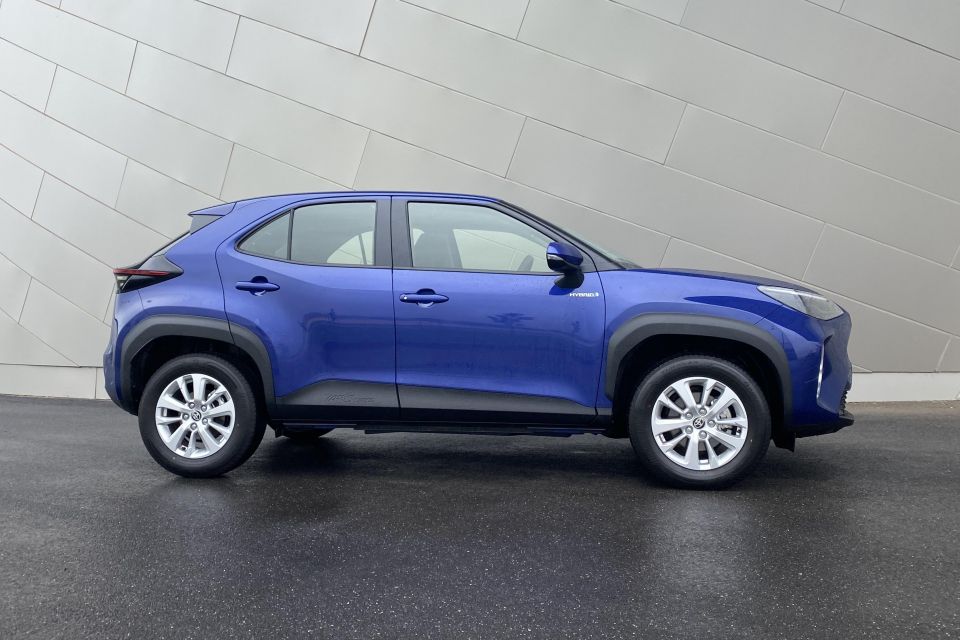
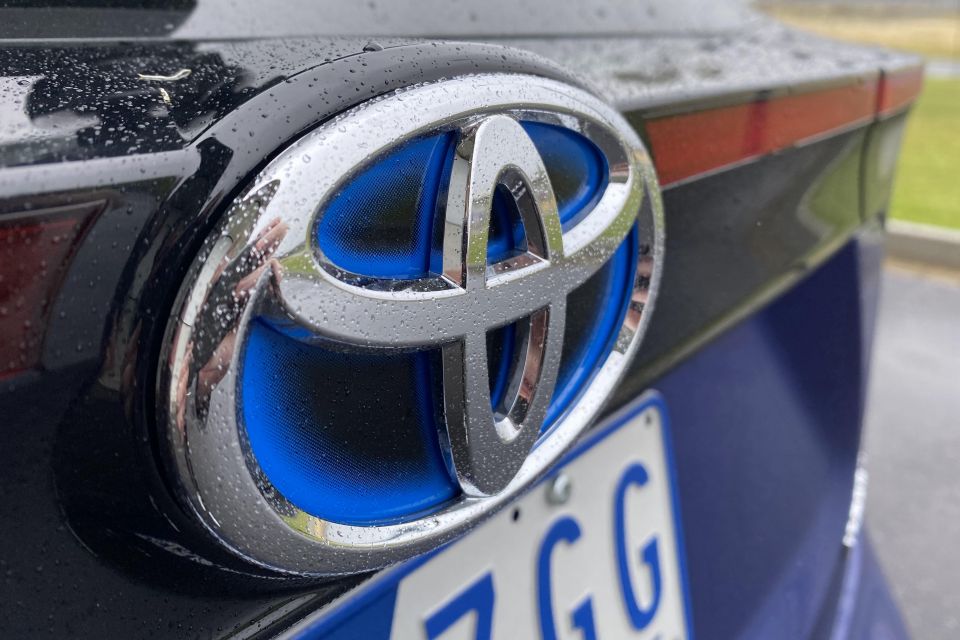

Toyota:
You sit up a little taller in the Yaris Cross, making it more SUV-like than car-like.
The hybrid drivetrain is excellent, particularly in urban stop/start driving, where the electric motor handles the getaways off the mark. It’s silent up to about 30km/h if you’ve battery charge (the engine generates its electricity, rather than a plug), in reverse, and often down hills.
This means it’s smooth and largely silent, and in Sports mode the throttle calibration sharpens further.
Once at speed, the thrummy little engine engages seamlessly, and while it’s not the most refined unit, the well-sorted e-CVT mitigates much of the harshness. Pull the gearstick down into ‘B’ mode rather than ‘D’, and the energy-recuperation system adds resistance whenever you lift off the accelerator.
I averaged fuel use of 4.8L/100km without trying, compared to 6.5L/100km in the Skoda. And while the Toyota is slower to 100km/h (11.2sec by my stopwatch), it was actually a little faster than the Skoda up to 60km/h – thanks to that motor power off the line.
The steering is super light and quite numb, while there’s more body roll in corners and less supportive front seats. But its smaller wheels (16-inch) and chunkier tyres (205/65) help smooth out sharp hits better. Its suspension seems softer and cushier than the Skoda’s, which is the positive trade-off for that less-disciplined body control against cornering loads.
The Bridgestone eco tyres should have low-rolling-resistance, but the do send more tyre roar into the cabin – the noise level in the Toyota was 72dB at 100km/h compared to 70dB for the Skoda.
| Skoda Kamiq | Toyota Yaris Cross | |
|---|---|---|
| Front suspension | MacPherson strut | MacPherson strut |
| Rear suspension | Torsion beam | Torsion beam |
| Front brakes | Ventilated discs | Ventilated discs |
| Rear brakes | Solid discs | Solid discs |
| Ground clearance | 188mm | 170mm |
| Weight | 1211kg | 1215kg |
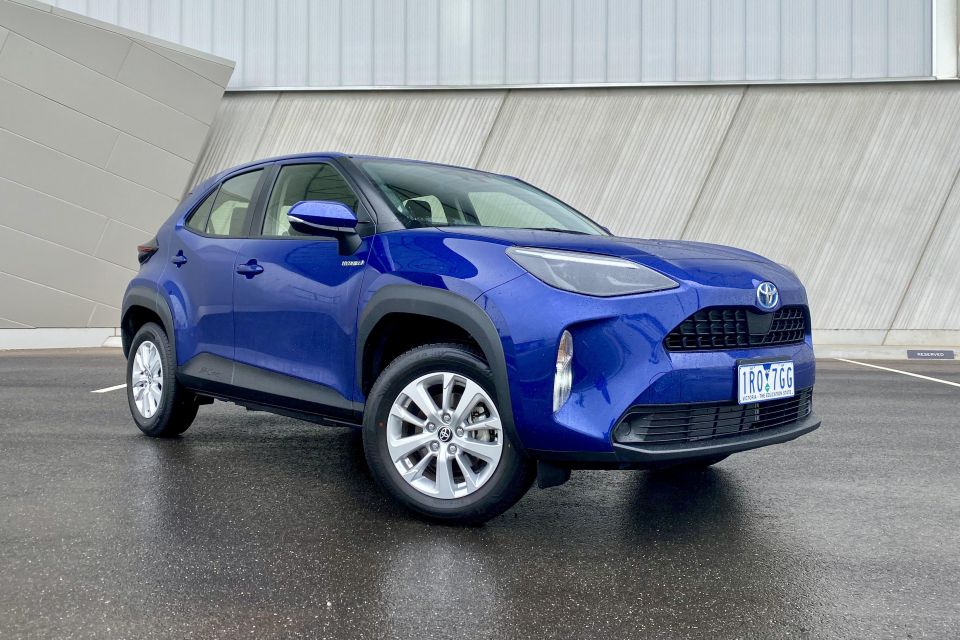

Both brands offer five-year warranties. Toyota will extend the engine warranty to seven years if you use an official dealer to service your vehicle every time. The warranty on the hybrid’s battery covers up to 10 years of use.
The Skoda can be ordered with a pre-paid servicing package that covers five years or 75,000km (five visits at intervals of 12 months or 15,000km) for a reasonable $1400. If you pay-as-you-go, you’ll pay a lot more.
That’s fairly reasonable, but the Toyota is even cheaper to maintain – notwithstanding is superior fuel economy and ability to run on cheaper 91 RON petrol. The first five years of 75,000km right now should cost you $1025 ($205 per visit at 12 month or 15,000km intervals).
The non-hybrid is not cheaper to service.
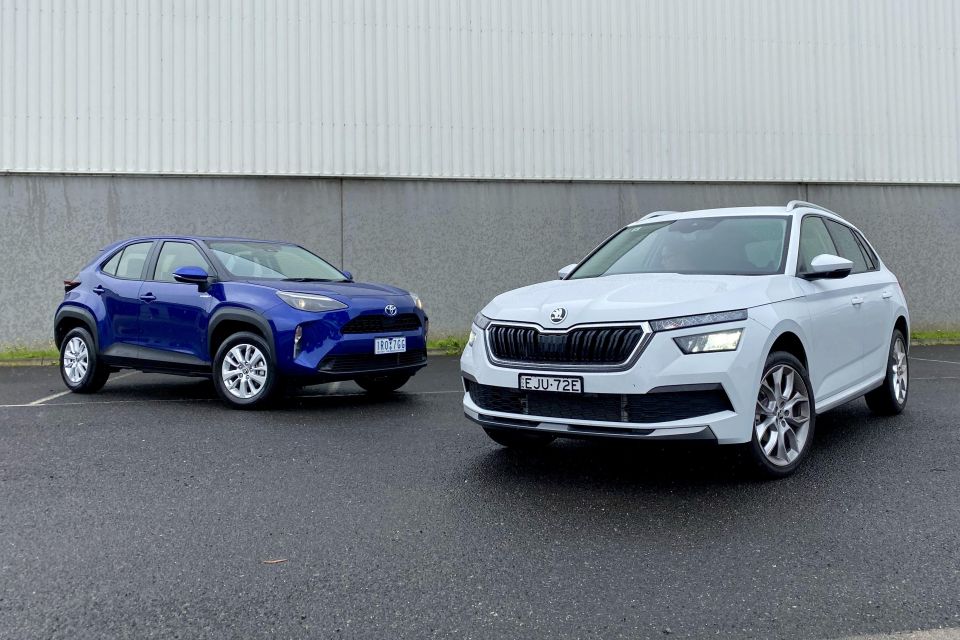
There are sound reasons to favour the Toyota: its peerless running costs, higher driving position, smoother ride quality, and breadth of variant and powertrain choices.
On the whole, though, the Skoda Kamiq 85TSI costs less, has notably more features than a price-point Yaris Cross does (including LED lights, an electric tailgate, and a wireless charger), slicker infotainment, a roomier and better-trimmed interior, and sportier handling.
I was deeply impressed with the package that Skoda has offered up, and would suggest any prospective Kona or CX-3 buyer go kick the tyres.
MORE: Skoda Kamiq news and reviews MORE: Toyota Yaris Cross news and reviews
Share your thoughts with us in the comments below!
Share your thoughts and write a review of a car you own and get featured on CarExpert.


CarExpert.com.au
6 Hours Ago


Damion Smy
20 Hours Ago


Damion Smy
23 Hours Ago


Damion Smy
1 Day Ago


Damion Smy
1 Day Ago


Damion Smy
1 Day Ago